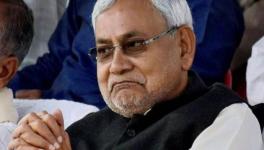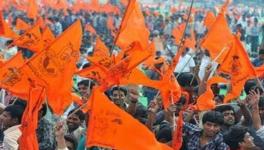To Retain Political Relevance, Yadavs Must Stand by Muslims
The Bharatiya Janata Party’s recent victories in five Assembly elections, including Uttar Pradesh, signal a rapidly-changing political situation whose import must be analysed. The victory in Uttar Pradesh is a consequence of the cow-centric politics the BJP has led for thirty years or more. Undoubtedly, the Muslims have paid the most significant price for this brand of politics. However, what goes unnoticed is how Hindutva politics has also hurt the interests of other social groups. For instance, those caste groups that had forged political alliances with the Muslims have had to pay a heavy political and social price. These castes had politically aligned with the Muslims, first in the early nineties to keep the Congress party out of power, and in later years to keep the BJP at bay.
This is not true for Uttar Pradesh alone but other states too. For example, after Modi-Shah rose on the political horizon, efforts were made to marginalise the Mahar caste in Maharashtra and Madhya Pradesh, the Chamars/Jatavs in Uttar Pradesh, the Jats in Haryana and the Yadavs in Bihar and Uttar Pradesh. Like the Muslims, these social groups will surely find themselves being edged out of the political game, if not wholly excluded. This is not to say that some members of these castes will not get coveted posts, as against the complete prohibition of Muslims in positions of power or responsibility. For instance, before Manohar Lal Khattar became Chief Minister of Haryana, the post was almost always held by a Jat. Similarly, in Uttar Pradesh, before Yogi Adityanath first became Chief Minister in 2017, a Yadav was the chief minister.
To understand this phase of politics, we need to re-examine the early days of Mandal politics. But if we view this history from the Muslim vs Hindu prism, we will only see what the BJP and its parent body, the Rashtriya Swayamsevak Sangh (RSS), want to show us. The atmospherics today are that Muslims all over North India are relegated to the sidelines. Indeed, but it is also a fact that Muslim candidates have won 34 seats in the Uttar Pradesh Legislative Assembly, while, for the first time in Uttar Pradesh, only 23 Yadav legislators have been able to win a seat.
In Maharashtra, a Mahar may not have been a chief minister, but this social group was the most vocal voice of the Dalits. It ensured that the Dalits got a social, political and intellectual hearing. The situation was slightly different in Bihar since former chief minister Lalu Prasad Yadav was ousted from power back in 2005. Despite this, the BJP and Chief Minister Nitish Kumar of the Janata Dal (United) could not completely marginalise the Yadavs. They could only be completely sidelined after Prime Minister Narendra Modi led his party to power in 2014. The RSS-BJP made complete preparations for this exclusion—they laid a trap, and the leaders of these castes got trapped in it.
Until then, in Bihar and Uttar Pradesh, the Jatavs and Yadavs played an essential role in keeping the socio-political fabric intact, bringing along the Muslims and other progressive sections of the society. While the BJP leadership increased its influence by spreading religious bigotry, it was directly challenged by members of these social groups. They not only joined the political alliances led by members of their communities but also came together with the Muslims at the social level. Right after the demolition of the Babri masjid, Bahujan Samaj Party leader Kanshi Ram and Samajwadi Party leader Mulayam Singh formed a solid political alliance in which the Muslims had a direct and crucial role. The result was that even after the demolition in Ayodhya, the BJP could not immediately capture power in Uttar Pradesh despite having high-visibility leaders such as Kalyan Singh in its kitty.
The situation was identical in Bihar. Lalu Yadav countered the forceful religious mobilisation of the BJP with a mobilisation of castes that refused to allow the Muslims to be segregated from the mainstream. However, in today’s changed circumstances, the BJP has made considerable changes to its own strategic blueprint. It has been mobilising the Dalits in Uttar Pradesh, beginning with recasting the heroes of the Dalits as mascots of Hindutva. In his book Fascinating Hindutva: Saffron Politics and Dalit Mobilisation in North India, sociologist Badri Narayan, who is of late inclined towards Hindutva, elaborates on this process and its symbolic value in great detail.
Since our history was always cruel to the oppressed, each caste tries to come on par with the Brahmins. This is why the key symbols and important figures of the Dalits also lend themselves to being recast as Hindutva heroes who perpetually struggled against the Muslims. This capture of the narrative turned out to be a great victory for the Hindutva laboratory.
Still, the question here is not whether the Muslims have lost their status in the democratic system. The question is, what is the status of Muslims? And the answer is that in the last eight years, their position has been worse than that of the Yadavs of Bihar and Uttar Pradesh, the Jats of Haryana, the Mahars of Maharashtra or the Jatavs of Uttar Pradesh. The second difference is that Muslims are repeatedly told their status has been eroded, something that is never acknowledged for the other communities. Strategically, the BJP wants to keep sending out the message that Muslims are politically irrelevant. For, it sends a signal even to those who support the Muslims that if they stand with the Muslims, they too will become irrelevant.
In other words, those castes which mattered to the Hindutva project only as voters now find their political status considerably reduced. Of course, the elite leaders of these groups have played a significant role in allowing this situation to come about. Some may ask why, if their status is so diminished, are Sanjiv Balyan or Mukhtar Abbas Naqvi ministers in the Yogi government in Uttar Pradesh. The answer is that they are the BJP’s potted plants, used from time to time as decorative items.
The number of Muslim Members of Parliament (MPs) increased from 22 to 27 in the 17th Lok Sabha election held two years ago. Although the number of MPs of the constituent parties of the ruling NDA also increased, the NDA as a whole has only one Muslim MP. And there is not a single Muslim among the BJP’s 303 MPs. After the 2014 Lok Sabha election, there were three Muslim ministers in the Narendra Modi Cabinet; now, there is only Mukhtar Abbas Naqvi to represent every Muslim from the ruling party.
Now that the Muslims are sidelined, is the BJP less fierce against Muslims than before? No, not at all. Instead, the Yadav, Jatav and Jat voters have been added, along with the Muslims, as targets of state power. For eight years, the Modi government at the Centre, and for five years, the Yogi government in Uttar Pradesh, have worked in sync and publicised their efforts to strengthen religious mobilisation. How should we read this equation today? Should we accept that the politics of the Jats, Jatavs, Yadavs and Mahars, along with the Muslims, is over? Or should we say all these communities need to forge a new political path? The current leadership of these communities has refused to learn from their heritage. Most Dalit-backward leaders do not think of using their past as their political fulcrum as the elite caste BJP leadership does.
The situation is worse in Uttar Pradesh, where Akhilesh Yadav, in charge of the legacy of his father Mulayam Singh Yadav, and Mayawati, who inherited the legacy of Kanshi Ram, are perpetually wooing the upper castes. Both leaders need to learn from Lalu Yadav’s leadership of Bihar. When he was chief minister, Lalu Yadav prepared his community to stand up to the communal violence against Muslims. That formula remains potent in Bihar even today, whereas in Uttar Pradesh, Akhilesh did not give any such call to his core voters, the Yadavs.
Considering how the RSS-BJP is energetically pushing its Hindutva formula, Akhilesh Yadav should make the security of Muslims and Dalits the responsibility of the Yadavs. Mayawati has weakened considerably in this election, so the oppression of Dalits could increase in the coming days. Suppose Akhilesh Yadav in Uttar Pradesh, and Tejashwi Jadav in Bihar succeed in countering this. In that case, the currents of history can reverse—else, they will drown their community and themselves in the black hole of time.
The author is a freelance journalist. The views are personal.
Get the latest reports & analysis with people's perspective on Protests, movements & deep analytical videos, discussions of the current affairs in your Telegram app. Subscribe to NewsClick's Telegram channel & get Real-Time updates on stories, as they get published on our website.
























